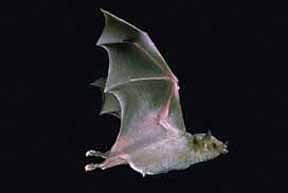Related Research Articles
Glover Morrill Allen was an American zoologist.
The Mexican Academy of Film Arts and Sciences is a professional honorary organization founded on July 3, 1946, in Mexico City to promote the dissemination, research, preservation, development, and defense of the cinematographic arts and sciences. Currently, the president of the AMACC is producer Mónica Lozano Serrano.

The big-eared woolly bat or (Peters's) woolly false vampire bat is a species of bat, belonging to the family Phyllostomidae.

The northern broad-footed mole is a species of mammal in the family Talpidae. It is endemic to the United States, where it is found in northern California, Nevada and Oregon at elevations up to 9,800 feet (3,000 m) above sea level.

Scapanus is a genus of moles in the family Talpidae. They live in North America from west of the Rockies south to Baja California del Norte, and north to British Columbia, wherever conditions permit a mole population; that is to say, apart from the most sandy, rocky, or developed places. As they are one genus, they are very closely related, but as species, they rarely if ever interbreed successfully.

The greater long-nosed bat or Mexican long-nosed bat is a species of bat in the family Phyllostomidae. It is found in Mexico and the United States. It chiefly consumes pollen and nectar, particularly from agave plants and cacti. Its habitat includes desert scrub and open woodlands. It is threatened by habitat loss.

The banana bat is an endangered species of bat in the family Phyllostomidae. It is also commonly known as the trumpet-nosed bat or the Colima long-nosed bat.

Richard George Van Gelder was an American mammalogist who served as the Curator of Mammalogy for the American Museum of Natural History in New York for more than twenty-five years.

Enrique del Moral Dominguez was a Mexican architect and an exponent of the functionalism movement, a modernist group that included Mexican artists and architects such as José Villagrán Garcia, Carlos Obregón Santacilia, Juan O'Gorman, Eugenio Peschard, Juan Legarreta, Carlos Tarditti, Enrique de la Mora and Enrique Yanez. The movement developed from innovative concepts presented by Frank Lloyd Wright, Le Corbusier, Mies van der Rohe and the Bauhaus school as well as Die Stijl, and remodeled the profile of cosmopolitan Mexico City and other cities in the 1930s.

William A. Wimsatt was professor of Zoology and Chairman of the Department of Zoology at Cornell University. From 1945 until 1960, Wimsatt taught courses in histology and embryology in the College of Arts and Sciences and also in the New York State College of Veterinary Medicine. He was well known for his pioneering research on the interrelationships of hibernation and reproduction and the biology of bats.

James Lloyd Patton, is an American evolutionary biologist and mammalogist. He is emeritus professor of integrative biology and curator of mammals at the Museum of Vertebrate Zoology, UC Berkeley and has made extensive contributions to the systematics and biogeography of several vertebrate taxa, especially small mammals.
Don Ellis Wilson is an American zoologist. His main research field is mammalogy, especially the group of bats which he studied in 65 countries around the world.
Rodrigo A. Medellín is a Mexican ecologist and Senior Professor of Ecology at the Institute of Ecology, University of Mexico (UNAM). Known for his work in bat, jaguar, bighorn sheep and other species conservation, his research has always been designed and conducted to advice conservation policy and conservation decision-making processes in Mexico and 16 other countries for over 40 years.
Bryan Pettigrew Glass was an American mammalogist.
Lim Boo Liat was a Malaysian zoologist whose pioneering work revealed the biological diversity of the Malay Peninsula and Borneo. He was a conservationist and a strong advocate for the preservation of the region's natural heritage.
John Edwards Hill was a British mammalogist who described 24 species and 26 subspecies during his career.
David Christopher Dawber Happold,, in publications often D. C. D. Happold, is a British-Australian mammalogist. His main research interests are the small mammals of Africa and Australia.

Leonila Vázquez García, known as Leonila Vázquez, was a Mexican entomologist and awardee of the Mexican Entomology Society's 1971 Entomological Merit medal. She is known for the study of the biology of the cochineal, an insect species used to create the red dye carmine. She was also a renowned butterfly researcher, contributing the first butterfly section to the Encyclopedia of Mexico and describing 39 new species to science throughout her career.

The Mexican mole is a species of mammal in the family Talpidae. It is endemic to Baja California in Mexico, where it is restricted to the highlands of the Sierra de San Pedro Mártir mountain range. Its specific epithet references naturalist Alfred Webster Anthony.

The southern broad-footed mole is a species of mammal in the family Talpidae. It is found only in the U.S. state of California and northernmost Baja California in Mexico.
References
- 1 2 3 Horst, G. Roy (1991). "Bernardo Villa Ramírez: An introduction" (PDF). Anales del Instituto de Biología Serie Zoología. 62 (2): 155–158.
- ↑ Sánchez Cordero, Víctor; Medellin, Rodrigo (2011). "Dr. Bernardo Villa Ramírez". Therya (in Spanish). 2 (3): 197–198. doi:10.12933/therya-11-54.
- 1 2 Medellin, Rodrigo A. (Spring 2007). "Bernardo Villa Ramirez: 1911–2006". Bat Research News. 48 (1).